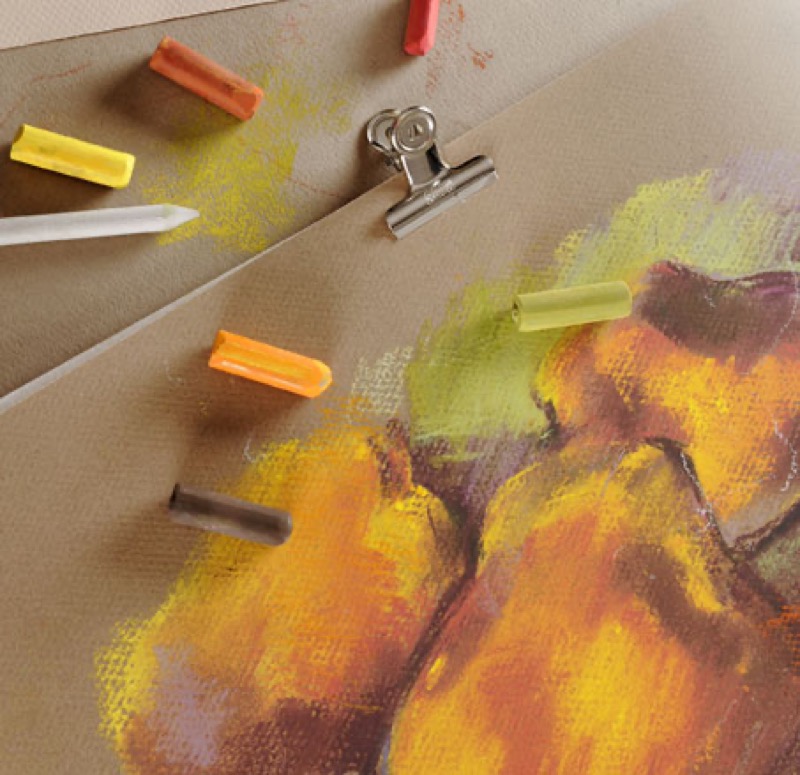Their brilliant colors have established their reputation. Tender and soft or, conversely, thick with a strong character, there is the right pastel for any composition. It all depends on how much of a shade is applied and the technique used.

1. Drawing or painting?
Dry or diluted, raw or nuanced, ad infinitum, with stumping, the art of pastel is often considered to be a drawing, or even a painting, technique. This is especially true for oil pastels, whose rendering is close to painting.
- Conversely, pastel pencils and square pastels (also called "hard" dry pastels) lend themselves to graphic lines and creating drawn works.
- Very rich in pigments, soft dry pastels show their brilliant colors in sweeping lines, as well as wide blocks.

2. Superimposing colors
Pastels find their expression in superimposed layers. Colors mixes are never prepared ahead of time and are worked out on the surface of the paper. Therefore, the paper shade is essential. It is mixed visually with the first color applied to generate an intermediate hue all the more strongly because of the rough grain of the paper: Pastels are applied first and foremost to contours.
There are two methods for mixing your colors:
- Physically, by mixing pigments.
- Optically, by laying one color over another without stumping. Doing so registers the juxtaposition of the different shades and recreates the intermediate nuances.
3. Dry or diluted?
Dry pastels are water soluble. Reduced to powder, with water added, they can be applied with a paintbrush, as a wash.
You can also soften a line, and strengthen or homogenize a detail by reworking it with a wet paintbrush.
4. Impastos
Multiplying thick layers of dry pastels is risky, because the paper saturates easily and may reject newly added material.
Conversely, due to their greasiness, oil pastels are frequently used in impastos without risking saturation.

5. What to draw and for what effects?
- Dry pastels (soft or hard)
Use them three ways:
- The side of the stick (A), rubbed horizontally, to spread blocks and quickly cover large areas: A one to two centimeter piece is better than a whole stick, because it is hard to apply evenly.
- The tip (B) or the edge (C), for precise drawing.
- The flat end (D) (position the stick vertically, perpendicular to the paper), to obtain thick, very soft lines.
Don't forget: the strength of the line varies depending on how much pressure you apply with the stick and on the grain of the paper. Supple and regular on a smooth surface, it will be choppy and jerky on a rough medium.
Getting it right: The pastellist's diagonal
Unless a specific effect is sought, it is better to hold your sticks diagonally: even if you are adding solid blocks or your lines are supposed to be stumped, try to always work obliquely, from top to bottom.
- Oil pastels
There are two ways to use them:
- Like pencils: spread or blend your lines with a finger or a paintbrush dipped in white spirit.
- Like paint: lift the color from the end of the stick with a paintbrush moistened with white spirit, and apply it to the medium.
Recommended product:
XL® Sand Grain
See also :
Pastel
Pastels & Colour: in three key steps
